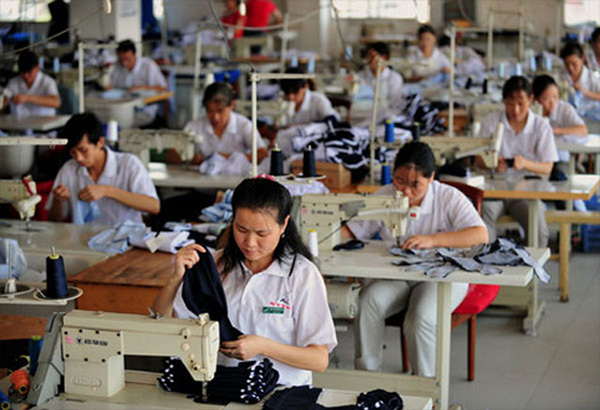Hemlines going up; is economy next?

There is this general idea, some call it the musings of idle brokers, that shorter skirts tend to appear in times when there is general consumer confidence and excitement is high, meaning the markets are bullish. In contrast, the theory says long skirts are worn more in times of fear and general gloom, indicating that things are bearish. A glimpse of leg speaks of confidence and a sense of independence; a sweeping skirt is a sign of modesty and austerity.
Now, the good news…The fashion columnist of the Financial Times reported last week that “there is one, overriding, unmistakable trend of the New York fashion week: the miniskirt is back, trailed in a far distant second by the jumpsuit.” And she titillates us that “the mini’s return suggests – given the hemline’s classic relationship to bottom lines and the theory that when they go up, so does the economy.”
But she was quick to wonder also if American designers are merely “engaging in wishful thinking or they know something Wall Street doesn’t.” And if the perfect storm that swept through Wall Street last weekend and Monday’s 504 points drop in the Dow Jones wiping out $600 billion of market value, it is easy to conclude that wishful thinking is it.
Last Sunday, after all, was a frantic Sunday, according to the New York Times, as Wall Street banks teeter — Lehman Brothers up for liquidation, Bank of America’s offer to buy Merrill Lynch was accepted and the giant American International Group (AIG) trying to raise $70 billion in order to survive. All that after Bear Stearns failed and ailing mortgage giants Freddie and Fannie nationalized to prevent further damage to the already battered housing market.
And if all that are not enough, Alan Greenspan said that more financial firms will fail and that housing won’t stabilize until 2009 (hmm... that’s just about the time the minis featured in last week’s Spring 2009 fashion week start showing up in the streets). The US credit squeeze has brought on a “once-in-a-century” financial crisis that is likely to claim more big firms before it eases, the former Federal Reserve chief said.
I guess we all want to believe that the rise in the hemlines foretell a rise in the world’s economic fortunes soon even in the face of a hurricane of bad news from all over — Europe, emerging markets. Rising skirt lengths is seen as a symbol of youth, playfulness, women’s liberation and a nation’s prosperity. The better the economy, the shorter the skirt (and vice versa).
I decided to check out the claim of the FT columnist. I clicked on the slide shows of the various designers from the websites of the New York Times and the Los Angeles Times. True enough, a lot of the dresses were showing some leg. But there were enough designers who still tended to cover the female anatomy with a lot of cloth, producing a curtain-like effect in the worse cases, as if the designers were working under threat of decapitation by the Taliban.
I came out feeling like it is a toss up between a recovery and a continuing undeclared recession. Maybe the websites did not have a good representation of what the FT columnist actually saw. Sure, hemlines did show a tendency for the upside. But collectively, the designs give a general feeling of hesitancy that rules out any conclusion of a trend that’s just around the corner. If fashion was indeed an indicator, there are still many pretty downbeat designers out there who are suggesting more gloom.
Our very own Monique Lhuillier, one of over 60 designers whose Spring 2009 collection was featured by the Los Angeles Times, did expose some leg but nowhere near the mini tradition we knew in the late 60s and 70s. Even when she did, she covered up the body with a lot of textile… not exuding that carefree feeling of the good times at all. She seems typical of the others, leading me to feel that if indeed a trend for minis is afoot, it is still early days.
This makes it easy for more rational market observers to dismiss any connection between hemlines and economic health as something that is as thin and flimsy as a miniskirt. Still, historical evidence is hard to resist.
In the 1960s, for example, it was pointed out by Icons.org, a UK website, the period is remembered for its economic affluence, high employment rate and a steadily improving standard of living. The 1960s are thought of as being “swinging” and liberal, with increased consumer confidence and the blossoming of pop culture that spread across the world.
Closer to our times, the shorter skirts shown for Spring 2007 tied in with Standard & Poor’s 500 Index hitting a seven-year high in May this year. On the other hand, the New York autumn/winter 2008 shows, actually predicted our recession mood today. Hemlines were all definitely below the knee – a clear indication of belt tightening.
Thus, the Telegraph, a British paper, in its July 21, 2008 issue, commented that “if only the City boys had taken one eye off the stock markets and cast it over the catwalk, they might have seen what was coming. This summer’s collections – which were shown last October when stocks were still riding high – were dominated by full-length looks.
“The onset of the credit crunch has coincided with the re-emergence of ‘cover-up’ chic, with hemlines plummeting almost as much as share prices. Fashion experts believe that the trend, which started on the catwalks and has now reached the high street, strengthens the theory that flush times mean higher hemlines, while the tightening of belts sends skirts to the floor.”
The Telegraph interviewed Hannah Sandling, a fashion writer and stylist, who explained “in leaner times, people don’t feel so confident about flashing their cash around and dressing in a showy way, and so they tend to opt for a more demure, understated look that reveals less flesh. Just about the only women who are still baring all at the moment are the super-rich Russians, but their economy is still booming and the credit crunch isn’t really an issue for them.”
Harold Koda, the fashion historian and curator at the Costume Institute at the Metropolitan Museum in New York told the Telegraph “the rule does not always apply, but what you can say is that any great designer has his or her finger on the pulse of society. And when you are psychologically battered and feel a sense of encroaching pessimism, there is a tendency to cover up, whether that means long sleeves, higher necklines, long skirts or opaque tights.”
Clare Coulson, the fashion commentator and acting fashion features editor at Harper’s Bazaar magazine, said that designers would continue to deliver full-length “comfort dresses” while the economy remained uncertain. She told the Telegraph: “When times get tough, psychologically designers tend to focus on comfort dressing and want to give us something more cocooning. With foreboding times ahead, the maxi dress is probably here to stay.”
Whatever one wants to believe, it seems this is a more fun way of forecasting the market than crunching numbers. Consciously or not, fashion designers have proven to be pretty clairvoyant, forecasting financial gloom. Or as the FT is now saying, rising hemlines may be telling us that the bottom has been hit and believe it or not, better times are ahead of us... by summer of 2009.
Then again, making investment decisions based on women’s skirt length isn’t the most prudent, specially when deciding what to do with one’s life savings. Instead of examining skirt length to make investment decisions, my instincts tell me it is still better to focus on market fundamentals and data.
But then again, who am I to resist a good excuse to pay close attention to the level of exposure of girls’ legs and calling it market research? If that’s the only happiness left to an investor in this kind of bear market, that should be as good a return on investment as can be expected until the good times roll again… and that will be when the hemlines do finally go on that long awaited upswing.
Joneses
Q: Why is the fall in the stock market not so bad?
A: It won’t be so hard to keep up with the Dow Joneses.
Boo Chanco’s e-mail address is [email protected]
- Latest
- Trending




























